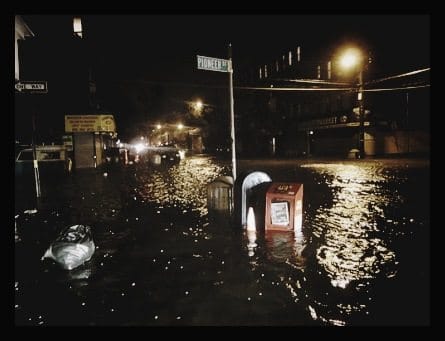Shoreline Residents Will Be Better Supported During Future Recoveries


An aviation bill could help homeowners previously ineligible for disaster relief funds.
After Superstorm Sandy, some homeowners received FEMA emergency funds. Once those emergency funds maxed out at $32,000, FEMA instructed homeowners to apply for low-interest, federal-based Small Business Administration (SBA) loans. Soon after some homeowners qualified for and received SBA loans, the city’s federally funded disaster recovery program, Build It Back, was implemented. Homeowners who had applied, qualified and received SBA loans became ineligible to receive Built It Back funding. Those who qualified but did not take SBA loans also became ineligible for Build It Back funds.
As part of the FAA Reauthorization Act, Congress passed disaster recovery reforms last week at the recommendation of U.S. Rep. Dan Donovan. The measure will allow homeowners, who were once restricted from participating in federal programs, the opportunity to apply for federally funded grants.
Donovan met with the House Transportation and Infrastructure Committee, which has jurisdiction over the Federal Aviation Administration and a large part of the nation’s disaster recovery, to propose a measure that would allow future SBA loan qualifiers and recipients to receive federal grants.
“The federal rules Congress and the agencies implemented after Sandy were terribly unfair to a lot of New Yorkers, and the reforms I helped pass last week came from months of conversations,” Donovan said. “Plenty of folks deserve some credit for the fact that once this bill becomes law, no future disaster victim will be burdened with an SBA loan while others in the same situation get free grants.”
The Congressman credited Staten Island Borough President Oddo and HUD Regional Administrator Holly Leicht for working with him on the months-long negotiations. Donovan said the 2017 survey that Oddo and Leicht initiated helped him highlight specific recovery setbacks plaguing Southern Brooklyn.
In addition, the measure requires an overhaul of post-disaster environmental review requirements. As it stands, before Build It Back can begin repairing a home, the City must conduct an environmental evaluation to prove the site safe.
The Congressmember’s measure looks to investigate the cost associated with the current rules of the environmental review. According to Donovan, the process is expensive and time-consuming ultimately contributing to Build It Back delays.
Built It Back, an initiative dating back to former Mayor Bloomberg’s administration, was first implemented in Oct. 2013. Since then, the program has received criticism for progressing sluggishly while increasingly burdening taxpayers.
Last September, the Committee for Recovery and Resiliency held an oversight meeting to address the ongoing dis-enrollment of potential Build It Back participants. Among other issues, increased bureaucracy was highlighted as a deterrent for some homeowners.
To minimize some of the bureaucracy associated with Build it Back, Donovan added a measure that includes recommendations for streamlining the application process. Rather than submitting several applications reaffirming the same eligibility to different federal programs, the measure looks to implement an “all-encompassing eligibility portal.”
“There is no question that far too many of the New Yorkers impacted by Superstorm Sandy were unable to receive the timely assistance they so desperately needed because of burdensome red tape,” said Councilmember Treyger whose district includes Coney Island that was ravaged by Superstorm Sandy. “The confusion over SBA loans left many of the New Yorkers whose homes and lives were devastated by the storm facing further financial devastation, as well.
“I believe these reforms are a step toward that end, as well,” added Treyger who has advocated for New Yorkers impacted by Superstorm Sandy.
The new measures are not retroactive however and therefore will not remedy issues of homeowners already riddled with setbacks involving SBA loans and Build It Back.
“Congress should have fixed this problem back in 2012,” said Donovan. “Unfortunately they didn’t, and thousands of Sandy victims are now stuck with SBA loan debt that will take decades to repay. But with my measure, this won’t happen again.”




